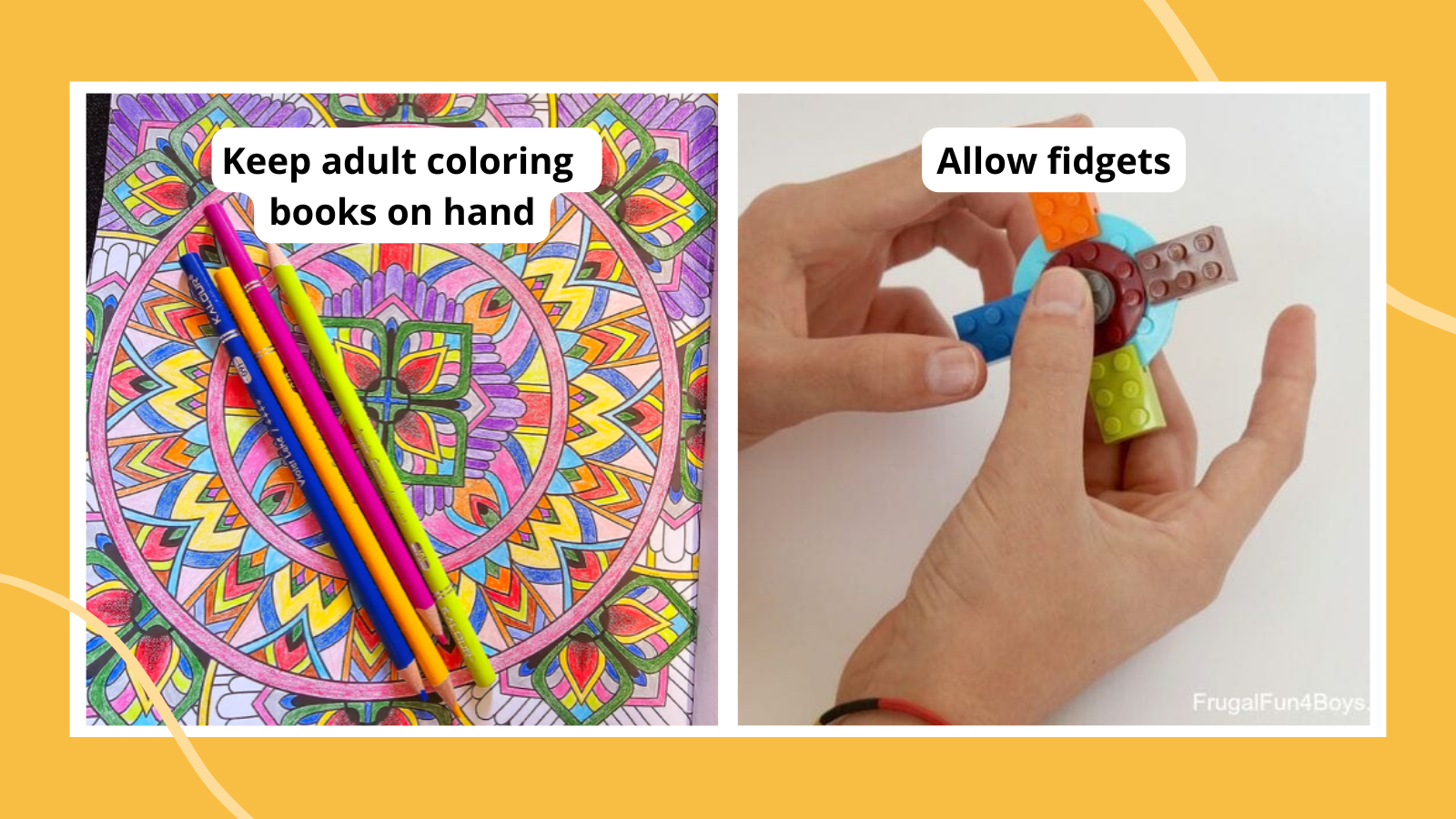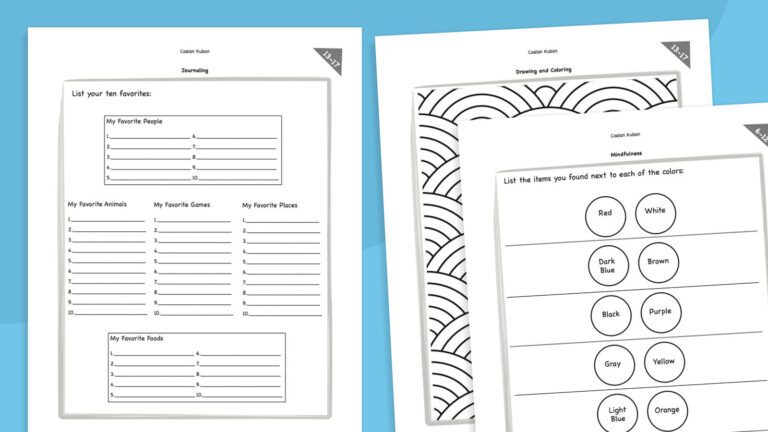A lot of kids are struggling right now, and educators are seeing it firsthand. “We see many students for mental health challenges. … Anxiety and stress are two of the biggest,” says J.W., a school counselor from Richmond, Virginia. “Students don’t have good coping strategies, relationship skills, or academic management skills.”
Educators need more resources to offer support in the classroom. That’s why we’ve put together this list of mental health activities for teens (many work for younger kids too!).
What can we do to help our kids?
Recently, we’ve seen new initiatives rolling out to support our kids. Many are trying to put together resources to meet this important need. Some have even suggested turning to AI mental health apps to address the shortage of qualified mental health professionals.
School counselors like J.W. see a clear need for something deeper and more immediate. “It’s important that students participate in clubs, sports, and any kind of social gathering to help them become more of a member of our community,” she says. “Feeling connected is so important for self-esteem, socialization, and the sense of belonging.”
“Creativity is awesome because it gives students freedom to express their emotions or thoughts in another way,” she says. “Mindfulness is always important because we need to understand who we are, how we are, what we need, how we need to communicate, and how we can grow. Get them involved in something. The saying ‘it takes a village’ is absolutely true in every sense. If teens feel more love and support and relationships form from being a part of something, it’ll help with their mental health.”
That’s where everyday classroom activities—simple, intentional moments that promote connection, creativity, and mindfulness—can make a real difference.
Mental Health Activities for Teens
1. Reflect through journaling
Journaling has known mental health benefits. It has been associated with reduced anxiety, increased awareness, emotional regulation, reduction of brooding, and even speeding up physical healing. The best part is that it’s super easy to do! Each day, designate a few minutes of class time to writing down thoughts and feelings to help kids better understand their thoughts, behaviors, and emotions.
Try this: 18 Benefits of Journaling for Students (and Teachers!)
2. Give students time to talk
Research tells us that “Classroom talk helps students to learn, to reflect on what they are learning, and to communicate their knowledge and understanding. Active listening is effective participation in a conversation. It is an activity which helps the speaker become understood.” Set some ground rules to ensure the discussions are fair and respectful, and then create a routine around making space for them to talk on a regular basis.
Learn more: Why Kids Need More Talk Time in the Classroom

FEATURED PICK
3. Build your toolkit for mental health support
Supporting student mental health requires more than good intentions—it requires effective strategies. The Albion Center for Professional Development at Idaho State University offers affordable, self-paced online courses to help educators strengthen trauma-informed practices, boost emotional intelligence, and learn about suicide prevention and resilience-building. These graduate-level courses fit into busy schedules and may count toward certification renewal and salary advancement, making them a smart way to grow your skills and better support your students.
4. Practice mindfulness
As Dr. Amy Saltzman, director of the Association for Mindfulness in Education, explains, “Incorporating mindfulness into education has been linked to improving academic and social and emotional learning. Also, mindfulness strengthens some underlying development processes—such as focus, resilience, and self-soothing—that will help kids in the long run.” Mindfulness is an excellent tool to help reduce tension and recharge students’ attention spans.
Learn more: Ways To Bring More Mindfulness and Self-Care Into Your Classroom
5. Get outside
The benefits of getting outside for our physical and mental health are profound. Being outdoors has been shown to lessen anxiety, improve focus, boost immunity, and help us get a good night’s sleep, among other things. The Japanese practice of shinrin-yoku, or forest bathing, improves symptoms associated with stress, anxiety, and depression just by being in nature. Schools in Denmark have even moved learning into the actual forest! If you don’t have direct access to the outdoors, even five minutes at an open window can help.
Try this: Easy ways to take your students outside
6. Incorporate calming mind-body exercise
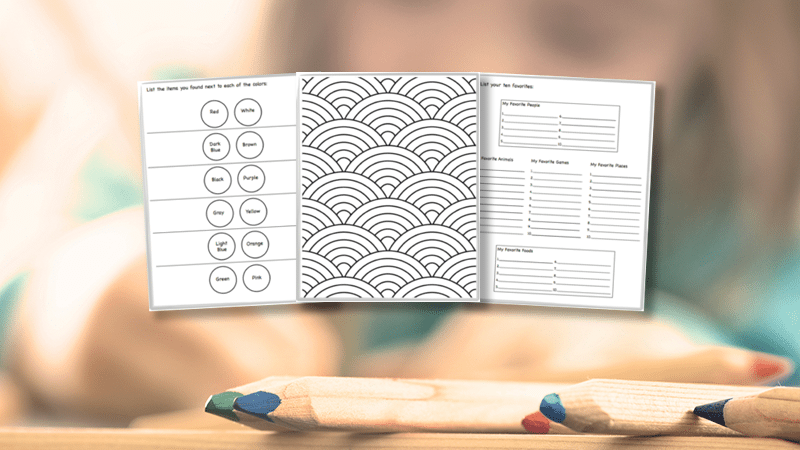
Mind–body exercise combines movement sequences, attention regulation, and breathing control. Recent research has shown that practices such as tai chi, qigong, and yoga can improve learning, memory, and verbal fluency, as well as reduce stress, anxiety, and depression. No equipment is required, so this is one of the easier mental health activities for teens to incorporate into their day.
Try this: Calming Mind-Body Exercises To Try With Your Students
7. Take active breaks
Movement breaks are great for students because they help create the level of alertness that enables a child to focus and concentrate. Incorporate short bursts of exercise into your agenda. Or put on some tunes and have a five-minute dance party in class!
Try this: Best Dance Songs To Get Kids Moving
8. Mentor your peers
Peer mentoring can help build coping skills and resilience in students. One study even found that peer mentors “had a positive impact on the mental health of both the mentors and the mentees, with benefits including improved self-esteem, increased empathy, and reduced anxiety levels.”
Try this: Introduction to Peer Mentoring for Schools
9. Allow fidgets
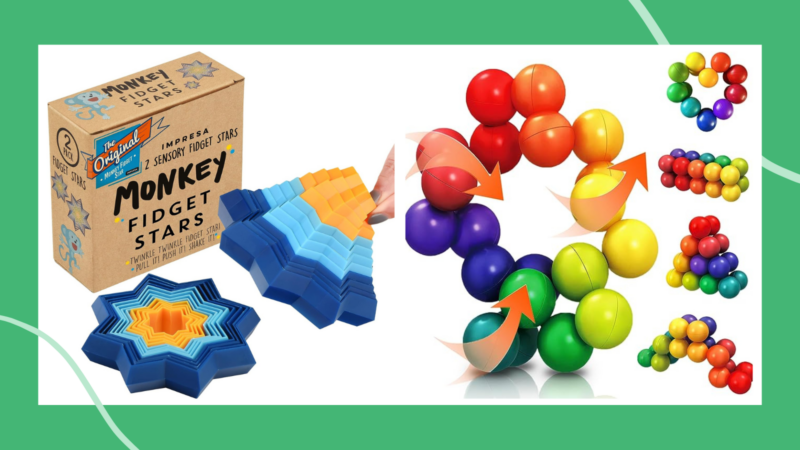
Fidget toys can be a great tool to help students stay engaged. Those with sensory needs, difficulties focusing, or feelings of overwhelm can use fidgets to reduce anxiety, manage energy levels, and stay focused.
Try this: Classroom-Friendly Fidget Toys and Devices To Help Students Focus
10. Tap into art therapy exercises
The healing power of art is especially beneficial for the mental health of teens. The American Art Therapy Association says “Art therapy is used to improve cognitive and sensorimotor functions, foster self-esteem and self-awareness, cultivate emotional resilience, promote insight, enhance social skills, reduce and resolve conflicts and distress, and advance societal and ecological change.” These all sound like things we can use in the classroom!
Try this: Art Therapy Activities To Help Kids Identify Their Feelings
11. Create a quiet space
Schools in Hennepin County, Minnesota, use calm spaces “for prevention to deescalate emotions or anxiety before one gets too overwhelmed. A calm room within the school setting can allow adolescents the opportunity to access a variety of tools and techniques to combat anxiety or daily stress.” You can fill the space with various mental health activities for teens, such as fidgets and poetry books.
Try this: How To Create and Use a Calm-Down Corner in Any Learning Environment
12. Facilitate community with team-building activities

Teamwork can be instrumental to improving communication, listening skills, and relationships with peers. It can also help kids develop more self-confidence and self-awareness. Incorporate team-building activities into your curriculum throughout the year to encourage community and help strengthen relationships among your students.
Learn more: Icebreaker Activities for Middle and High School Students
13. Cultivate a class garden
Gardening is a great hands-on activity that can boost kids’ brain development, promote a sense of well-being, decrease anxiety, and enhance problem-solving while learning about the natural world. It can be very grounding to plant something in the earth and watch it grow. And though tending to a garden from seed to harvest is a slow process, the rewards are immeasurable.
Learn more: How One School Garden Transformed a Neighborhood
14. Read for pleasure
A study of more than 10,000 young adolescents found that those who begin reading for pleasure early in life tend to perform better at cognitive tests, have better mental health, and are generally better adjusted. So, encourage kids to pick something they’re excited to read, and give them time to dive in!
Try this: Teachers’ favorite books for teens
15. Adopt a classroom pet
Studies show interaction with animals can help decrease stress, improve physical and mental health, and help kids with their emotional and social skills. Consider adopting a classroom pet, or look into finding registered Pet Partners volunteers who can bring a therapy animal into your classroom.
Learn more: Dogs in the Classroom Improve SEL, Cognitive, and Even Reading Skills
16. Have a supply of adult coloring books on hand
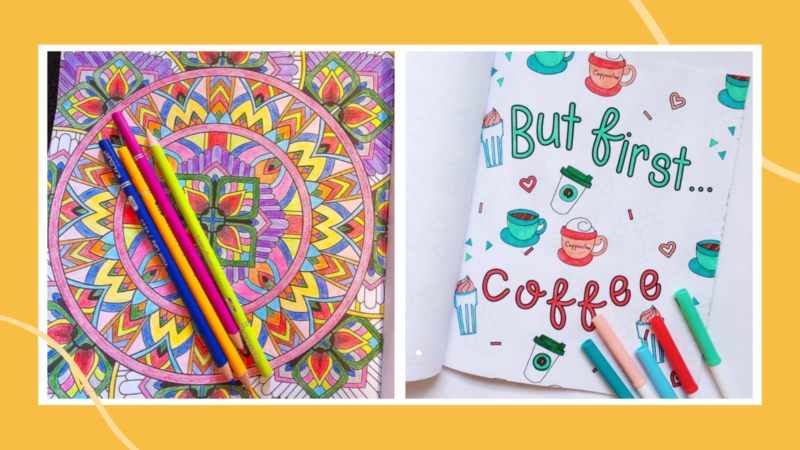
Feeling the tension in your classroom? Break out the crayons! Research shows that using adult coloring books can relax the brain, improve brain function, and boost focus while also reducing stress and anxiety. It can also help put us in a meditative state and lead to a good night’s sleep.
Try this: Best Calming Adult Coloring Books
17. Let the music flow
From stress relief and self-soothing to emotion regulation and physiological benefits, music can play a powerful role in mental health and well-being for many people. For teens, music often takes on an even greater significance—it can contribute to the process of identity formation. Whenever possible, allow your students to tune in to music.
Try this: Big List of School-Appropriate Songs
18. Try a meditation session
According to PsychCentral, “teenagers can use mindfulness practices to help reduce anxiety and stress and become more present in school, with friends, or at home.” Mindful partnered with WholeSchool Mindfulness to create a special collection of guided meditations designed to help students find more calm, joy, and compassion in their everyday lives. It’s a great resource for educators.
Try this: Best meditation sessions
19. Organize a digital detox
A digital detox for teens has several benefits, including improving social skills, enhancing the ability to read emotional cues in others, fostering better interpersonal relationships, and improving their overall sense of well-being. Additionally, reducing screen time encourages physical activity, which is crucial for mental and cardiovascular health. See how doing a digital detox challenge impacted students in British Columbia and New Hampshire.
Try this: Digital Detox: Why Schools Are Swapping Laptops for Paper
20. Eat mindfully
According to Harvard’s School of Public Health, mindful eating “is guided by four aspects: what to eat, why we eat what we eat, how much to eat, and how to eat.” It also expresses gratitude for the meal and may incorporate deep breathing or meditation before or after the meal.
Learn more: Mastering Mindful Eating (Grades 6-8) and Mastering Mindful Eating (Grades 9-12)
21. Allow snacks in your classroom

As part of mindful eating, trust students to know when they need to feed their bodies. Yes, snacks can create messes in the classroom, but eating a healthy snack can help teens stay focused, give them energy, and keep hunger in check. Set expectations about keeping the classroom tidy and which types of snacks are acceptable.
Try it: Best healthy snacks for the classroom
22. Try aromatherapy
According to research, the scent of rosemary, sage, and peppermint may boost memory. In fact, one study “found that those who played memory games in a rosemary-scented room received higher scores than those who played them in an unscented room.” Another study showed that using “lavender and rosemary scented candles has been found to reduce the test pressure of nursing school students.” Before you rush out to buy candles and oils, though, be sure to check for sensitivities among your students.
Learn more: Ways To Help Students With Anxiety
23. Brain breaks are for big kids too
We all need a break sometimes, right? Brain breaks are a crucial part of the learning process for older kids as well as younger ones. These restful moments help teens relax and recharge, plus they create classroom community. So, feel free to take a breather!
Learn more: Educational Brain Breaks Your Students Will Love
24. Talk about sleep routines
Johns Hopkins Medicine emphasizes the importance of a good night’s rest for teens. Sleep allows our bodies to repair themselves and helps “prevent infections, rebuild our muscles and can even help our brains work better so that we can focus, prevent mood problems and helps our bodies function better.” Consider teaching students about the importance of good sleep hygiene through classroom workshops.
Try this: Teacher’s Guide: Sleep (Grades 6 to 8), Teacher’s Guide: Sleep (Grades 9 to 12)
25. Tell a creative story

Encourage teens to engage in creative storytelling where they can write and share their own stories or experiences. These sessions can unlock the intricate emotional landscapes of teenagers and help them with self-expression, identity exploration, communication skills, empathy, and perspective-taking, as well as self-reflection.
Try this: Inspiring Picture Writing Prompts (Free Google Slides)
26. Leave space for quiet
Much of the typical school day involves busy, noisy interaction. Reserve time in your schedule for snippets of peace and quiet to give students time to settle down and focus. Run relaxing videos in the background or put on soft, soothing music during quiet work time. You could also dim the lights and light a few (battery-powered) candles to create a calm, comforting atmosphere for a few relaxing moments.
Try this: How To Use Transition Times for Mental and Emotional Health Check-Ins
27. Stretch with classroom yoga
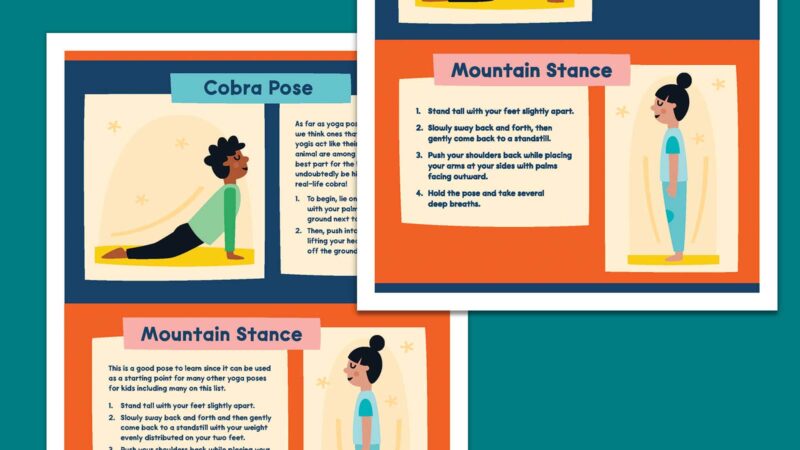
A good stretch can do so much for our sense of well-being. Research suggests that school-based yoga cultivates competencies in mind-body awareness, self-regulation, and physical fitness. Use simple yoga poses to manage stress and improve concentration during breaks.
Try this: Fun and Easy Yoga Poses (Free Printable Posters)

